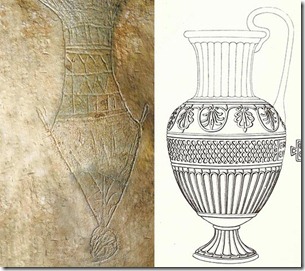The Bible and Interpretation has now published “A Preliminary Report of a Robotic Camera: Exploration of a Sealed 1st Century Tomb in East Talpiot, Jerusalem,” by James Tabor. The 27-page article (plus figures) is in pdf format, and the website allows comments.
I took a few notes as I read the article:
The “excavation” was conducted by Rami Arav and James Tabor.
Simcha Jacobovici is listed as film director and “professor in the Department of Religion at Huntington University, Ontario.” (Wikipedia indicates that he has an M.A. in International Relations.)
James Charlesworth is listed as “primary academic consultant.”
Eight ossuaries were found in the tomb.
The tomb was first studied in 1981. Some of the artifacts and documentation from this previous excavation are missing.
The tomb has been sealed under a condominium building since the 1981 excavation.
What is being hailed now as the “archaeological find that reveals the birth of Christianity” was not seen by archaeologists in the 1981 excavation. The four-line Greek inscription and the iconographic image (fish?) were first observed in the recent camera study.
The challenges to studying the tomb chamber by means of a robotic camera were significant.
One ossuary may be inscribed with Jonah, John, or Julia.
The interpretation of the 4-line inscription is quite difficult and there are a number of possibilities.
One work lists 108 images of Jonah in early Christian art, but these are found in the catacombs of
Rome and are no earlier than the 3rd century.
Tabor: “We are convinced that our inscription clearly makes some affirmation about either resurrection from the dead or lifting up to heaven. Whether one might identify it as “Christian,” or to be more historically precise—as associated with the early followers of Jesus, is another question. I would strongly argue in the affirmative. Although it is true that ideas of resurrection of the dead and even ascent to heaven are found in a multiplicity of Jewish sources in the late 2nd Temple period, they do not appear as expressions in burial contexts unless we have an exception here in the Talpiot tomb. That, along with the unprecedented example of writing the divine name Yahweh in Greek letters in a Jewish tomb—a place of tum’a or ritual defilement—argues for a heterodox or sectarian context.”
Tabor rejects the possibility that the iconographic image depicts a nephesh or an amphora.
Tabor believes a previously discovered ossuary with the name Yeshua (Jesus) depicts Jesus inside a fish.
Tabor: “Context is everything.”
The report includes 28 figures: maps, photos, and plans.
This preliminary report is a very helpful review and analysis of the evidence. James Tabor is to be commended for providing this to readers who want to know the basis for some of the conclusions being announced in the media. You can read the whole report here.

